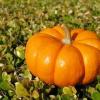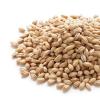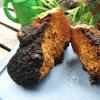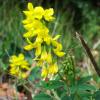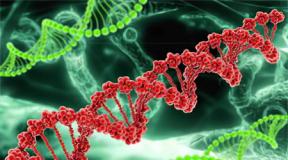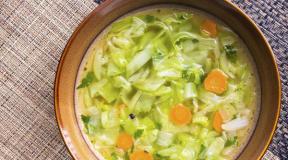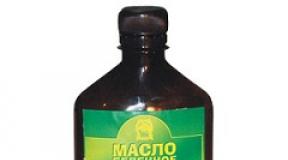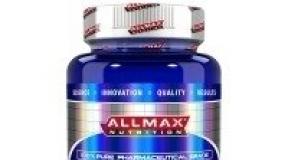Eucalyptus rod-shaped leaves for oral use. Eucalyptus uses: antiseptic, anti-inflammatory and other therapeutic effects Powder against insect bites
Harvested in late autumn, winter or early spring and dried leaves of a cultivated eucalyptus tree, Eucalyptus viminalis Labill. family myrtle - Myrtaceae.
External signs. A mixture of two types of leaves: leaves of old branches - petiolate, from narrowly lanceolate to crescent-curved, pointed, dense, 4-27 cm long, 0.5-5 cm wide; leaves of young branches - sessile with a rounded base or with short petioles, elongated-ovate, pointed at the apex, 3.5-11 cm long, 0.7-4 cm wide. There are leaves that have a transitional shape from elongated ovoid to lanceolate . The leaves are glabrous with a solid, even or wavy edge with numerous dots translucent in the passing bright light (receptacles with essential oil).
The color of the leaves is from light green to grayish green, sometimes with a purple tint and a slight bluish bloom. The smell is fragrant, aggravated by rubbing. The taste is spicy-bitter.
crushed raw material. Essential oil not less than 18%; humidity no more than 14%; total ash no more than 5%; darkened and browned pieces of leaves no more than 3%; other parts of eucalyptus (buds, fruits, pieces of twigs) no more than 2%; particles that do not pass through a sieve with holes with a diameter of 5 mm, not more than 5%; particles passing through a sieve with holes of 0.5 mm, not more than 10%; organic impurities not more than 0.5%; mineral impurities not more than 0.5%.
Anti-inflammatory agent.
The leaves, young shoots and flower buds of eucalyptus contain a significant amount of essential oil, there are also flavonoids, tannins, ellagic acid, resins and wax. To isolate 1 kg of essential oil, 45-50 kg of fresh raw materials are needed.
Eucalyptol (80-85%), cineol-monocyclic terpene with an intense oxidizing effect, globuol, camphene, pinene, terpineol, sesquiterpene, isoamyl alcohol, a number of aldehydes were found in the essential oil of eucalyptus globulus. The main component of pepper eucalyptus essential oil is piperyton (40-50%), it also contains L-a-phellandrene, pinene, cineole, eudesmol, and a number of sesquiterpene compounds. The bark contains up to 40% tannins. Eucalyptus essential oil is a light-moving transparent liquid, colorless or slightly yellowish in color with a characteristic smell of cineole.
From the leaves of eucalyptus, the anti-staphylococcal drug "Chlorophyllipt" is produced. Externally, herbal preparations of eucalyptus are used as rinses, lotions, wet swabs and douches. In surgical practice, they are used to treat abscesses, phlegmon, boils, osteomyelitis, purulent mastitis, open fractures, burns and frostbite, in dentistry - for stomatitis, gangrenous pulpitis, inflammation of the oral mucosa. In otorhinolaryngology - with angina, chronic rhinitis, pharyngitis, otitis externa, dermatitis and eczema of the external auditory canal. In gynecology - with colitis, whites and cervical dysplasia. In dermatology - with pustular rash on the skin. In ophthalmology - with blepharitis. In the form of inhalations, herbal preparations of eucalyptus are used for acute respiratory diseases, tracheitis and laryngitis.

Outwardly - for burns, wounds (in dressings that promote the formation of regenerative tissue), with sinusitis, influenza, pulmonary diseases, pediculosis, and muscle pain.
According to Dr. E. Bach, eucalyptus is indicated for slowness, emotional overload, as it has a balancing effect, giving some intellectual enthusiasm.
Infusion: a) 1 tablespoon of chopped leaves in 1 glass of water, boil for 1 minute, leave for 10 minutes, take 3 to 5 glasses a day;
b) 10 g of leaves (or 2 tablespoons) of raw materials per 1 cup of boiling water, cook as "a", take warm 1/4 cup 3 times a day after meals.
Tincture - 1 part of the leaves to 5 parts of 70 ° ethanol insist 10-12 days, take 15-20 drops 3 times a day after meals.
Essential oil - 2-5 drops with 1/2-1 teaspoon of honey to 1/2 cup of warm water 2-3 times a day.
Eucalyptus oil in inhalations, aroma lamps for influenza, diluted with sunflower oil 1:50, is used to treat furunculosis, phlegmon, colpitis, cervical dysplasia (for lubrication), as a distraction for myositis, radiculitis, plexitis (for rubbing). For rinsing and inhalation - 10-15 drops per 1 cup of boiling water.
The anti-inflammatory characteristics of Eucalyptus pruritus leaves are based on a combination of its unusual properties. And the possibilities of a medicinal nature give any product those components that are present in it. In this case, there are more than forty such components. One of them is bitterness, which is quite actively used in the treatment of many diseases, tannins, biologically active substances that kill or inhibit the growth and development of bacteria, microscopic fungi, and protozoa (phytoncides).
Indications for the use of eucalyptus rod-shaped leaves


EUCALYPTUS LEAVES
crushed raw material. Pieces of leaves of various shapes, passing through a sieve with holes with a diameter of 5 mm. Color from light green to grayish green, sometimes with a purple tint. The smell is fragrant. The taste is spicy-bitter.
Microscopy. The cells of the epidermis of the leaves of both old and young branches are polygonal on the surface, light gray spots (tubercles) are visible in their center. On a transverse section of a leaf, epidermal cells are more or less equilateral with strongly thickened outer walls and a thick layer of cuticle, protruding in the form of tubercles; stomata are embedded in the mesophyll of the leaf. Leaves are isolateral. In the leaves of young branches, the palisade tissue consists of two, rarely three rows of cells; spongy tissue and intercellular spaces are well defined. In the leaves of old branches, the palisade tissue is represented by three, rarely four rows of cells, the spongy tissue cells are not clearly expressed. The main vein of the leaves of both old and young branches has a crystalline sheath, there are druses of calcium oxalate. Essential oil receptacles are large, round or oval, immersed in the mesophyll and often occupy more than half of the leaf thickness; 1-2 layers of excretory cells are visible inside them.
Numerical indicators. Whole raw material. Essential oil not less than 1%; humidity no more than 14%; total ash no more than 5%; darkened and browned leaves no more than 3%; other parts of eucalyptus (twigs, buds, fruits) no more than 2%; organic impurities not more than 0.5%; mineral impurities not more than 0.5%.
Quantitation. An analytical sample of raw materials is crushed to the size of particles passing through a sieve with holes with a diameter of 2 mm. The content of essential oil is determined in 10 g of crushed raw materials by methods 1 or 2 (GF XI, issue 1, p. 290). Distillation time 1 hour.
Package. Whole raw materials are packed in fabric or flax-jute-kenaf bags no more than 20 kg net, crushed - in fabric or flax-jute-kenaf bags no more than 30 kg net. The crushed raw materials are packaged in 100 g bags in type II paper bags, followed by an investment in cardboard packs 8-1-4.
Shelf life. The content of essential oil is controlled annually.
Eucalyptus ball (Eucaliptus globulus Labill.)
Eucalyptus essential oil is obtained from the leaves and young shoots of fast growing evergreen trees of the myrtle family.
Eucalyptus trees are native to Australia and Tasmania. In the Crimea, it is cultivated as an ornamental and medicinal plant.
Eucalyptus is an excellent park tree with pronounced phytoncidal properties. Its plantings drain the soil, lower the level of groundwater. Eucalyptus trees played a huge role in draining and recovering from malaria Colchis with its marshy valleys of the river Rioni and Petit.
For medicinal purposes, leaves, one- and three-year-old shoots and essential oil are used. Leaves are harvested throughout the year, mainly in summer, shoots - from October to April, are included in the domestic pharmacopoeia.
Eucalyptus essential oil determines the main therapeutic effect of these plants, their high antiseptic properties. It is obtained by hydrodistillation from leaves and shoots. Eucalyptus preparations have a detrimental effect on streptococcal and staphylococcal microflora, typhoid fever bacillus, paratyphoid fever A and B, dysentery bacillus, purulent and anaerobic pathogens, inhibit the growth of dysentery amoeba and Trichomonas. In addition, eucalyptus trees have pronounced anti-inflammatory properties, promote rapid healing of wounds, and exhibit an analgesic, weak sedative and weak expectorant effect. Eucalyptus is also considered a general tonic. A decoction and infusion of eucalyptus and eucalyptus oil are used as antiseptics for rinsing and inhalation in diseases of the upper respiratory tract, as well as for the treatment of fresh and infected wounds, inflammatory diseases of the female genital organs (lotions, washings). Eucalyptus tincture is prescribed orally as an anti-inflammatory and antiseptic agent for inflammatory diseases of the upper respiratory tract and oral cavity, sometimes as a sedative.
In dermatology and cosmetics, an antiseptic, regenerating and deodorizing agent is used for skin spots, acne, and dandruff.
To obtain eucalyptus oil, the following are also used: Pepper eucalyptus (E. piperita Smith.), Ash eucalyptus (E. cinerea F. Muell.), Eucalyptus twig (E. viminalis Labill.)
WAYS OF INTERNAL APPLICATION
WAYS OF EXTERNAL APPLICATION
Leaf tincture - 10-15 drops per 1 cup of warm water, use for rinsing. Broth - 10 g of leaves pour 1 glass of cold water, boil on low heat for 15 minutes, cool, strain - 1 tablespoon per glass of water, use for rinsing and inhalation.
Infusion - 10 g of leaves to insist for 2 hours in 1 cup of boiling water in a sealed container, cool to room temperature. Use for rinses.
Broth - 30 g of leaves boil for 30 minutes in 1 glass of water with frequent stirring. Dilute a glass of broth in 1 liter of warm boiled water. Use for washing purulent wounds and ulcers.
Insect repellent powder - 2.5 g eucalyptus oil, 5 g talc, 32.5 g starch, sprinkled on exposed parts of the body or rubbed into the skin.
When using eucalyptus oil, as well as preparations containing it ("Pectussin", "Eucatol", "Efkamon", "Ingalipt", "Chlorophyllipt", it is necessary to check the patient's individual sensitivity to drugs, allergic reactions are possible. When applied externally, it can cause skin irritation .
ATC code
Description of the active ingredients of the drug Eucalyptus rod-shaped leaves.
The scientific information provided is general and cannot be used to make a decision on the possibility of using a particular medicinal product.
pharmachologic effect

Means of plant origin. Water and alcohol extracts from eucalyptus leaves exhibit bactericidal, antiviral, fungicidal, antiprotozoal and anti-inflammatory effects. The degree of their severity depends on the content of the essential oil (0.3-4.5%).
The activity of the main component of the essential oil of cineole (65-85%) is potentiated by pinenes, myrtenol, tannins (up to 6%). When taken orally and inhaled, eucalyptus preparations cause expectorant, mucolytic and bronchodilator effects, and when applied to the skin, astringent, anti-exudative, antipruritic, anesthetic, and in higher concentrations locally irritating effect. Infusion of eucalyptus leaves, thanks to the essential oil and a small amount of bitterness, increases the secretion of the digestive glands, improves digestion. When used in the form of a tincture, a sedative effect is manifested due to isovaleric acid aldehyde. Chlorophyllipt, containing a mixture of chlorophylls from eucalyptus leaves, has antimicrobial, especially antistaphylococcal, activity, stimulates regeneration processes. Essential oil components together with organic acids, tannins and trace elements manganese, zinc, selenium increase the resistance of tissues to hypoxia of various origins.
Indications for the use of the drug
Mainly as part of combination therapy for acute and chronic infectious and inflammatory diseases of various localization: rhinitis, stomatitis, gingivitis, laryngitis, bronchitis, pneumonia, hyposecretory gastritis, enterocolitis, dysbacteriosis, cholecystitis, pyelonephritis, vaginitis, colpitis, cervical erosion, burns, dermatitis , radiculitis, neuritis, myositis, trophic ulcers, neurosis, mild form of insomnia, osteochondrosis.
Dosing regimen
Preparations containing eucalyptus leaves are used orally, externally, topically, by inhalation, by intracavitary administration. The dose, frequency and duration of use are set individually, depending on the indications and the dosage form used.
Side effect
Maybe: allergic reactions to essential oil components and chlorophyllipt; when ingested in high doses - nausea, vomiting, diarrhea, muscle spasms; with frequent and / or prolonged inhalation use - dryness of the mucous membranes of the respiratory system.
Leaves of cultivated trees of the ball eucalyptus - Eucalyptus globulus Labill. and ashy eucalyptus - Eucalyptus cinerea F. Muell., fam. myrtle - Myrtaceae; leaves that have formed in the current season should be collected no earlier than November, and overwintered - at any time of the year.
External signs
Eucalyptus ball leaves. A mixture of two types of leaves: 1). leaves of old branches are petiolate, oblong-lanceolate, less often broadly lanceolate, mostly sickle-curved, thick, leathery, gray-green in color, sometimes with a reddish-purple tint; 10-30 cm long, 3-4 cm wide; 2) leaves of young branches - petiolate or with short petioles, ovoid or elongated ovate, at the base with a heart-shaped notch, pointed at the top, thin, dense, gray-green in color with a bluish tint, 7-16 cm long, 1-9 cm wide .Ash eucalyptus leaves. A mixture of two types of leaves: 1) leaves of old branches - petiolate, elongated ovoid, 5 to 13 cm long and 1 to 5 cm wide at the base, gray-green in color; 2) the leaves of young branches are petiolate (mostly), mostly rounded, broadly ovate, rounded or pointed at the apex, from 1.5 to 8 cm long and 1 to 7 cm wide. The color of the leaves is gray-green with a blue tint.
All leaves of both species are entire, glabrous. In thinner leaves, in transmitted bright light, numerous translucent points (receptacles with essential oil) are noticeable; in addition, dark dots (corky tissue) are visible in the leaves of old branches. The smell is strong, fragrant; bitter-spicy taste.
cut raw materials
Pieces of various shapes ranging in size from 1 to 8 mm.Microscopy
On cross sections of all types of leaves of both eucalyptus species, it is seen that the epidermal cells on both sides have strongly thickened outer walls and are covered with a cuticle layer, which is thicker in the leaves of old branches. In eucalyptus ballus, the surface of the cuticle is even or slightly wavy. For ashen eucalyptus, the cuticle is tuberculate on both sides of the leaf, more pronounced on the leaves of old branches.All leaves are isolateral. In the leaves of old branches, the palisade tissue usually consists of 2-3 rows of cells on each side. Spongy tissue is poorly developed. The leaves of young branches of both species are distinguished by a smaller number of rows of palisade tissue cells (1–2 rows) and a more strongly developed spongy tissue. In the pulp of all leaves there are numerous druses, less often prismatic crystals of calcium oxalate. The veins have a crystalline sheath; in the leaves of young branches, the sheathing is weakly expressed. In the mesophyll of all types of leaves there are submerged essential oil receptacles of a round or oval shape; receptacles are very large and often occupy more than half the thickness of the sheet. Inside they are lined with 1-3 layers of excretory cells. From the surface of the epidermis cells of all leaves on both sides are polygonal, of different sizes and shapes. In the leaves of ashen eucalyptus, a large cuticle tubercle rises on each cell of the epidermis; the leaves of young branches have fewer tubercles.
Numerical indicators
Moisture not more than 14%; leaves darkened and browned no more than 3%; other parts of eucalyptus (twigs, buds, flowers, fruits) no more than 2%; organic impurities not more than 0.5%; mineral impurities not more than 0.5%. For whole raw materials: crushed parts passing through a sieve with a hole diameter of 3 mm. no more than 1%. For cut raw materials; particles larger than 8 mm, not more than 5%; particles passing through a sieve with a hole size of 0.5 mm, not more than 8%.quantitation
In 10 g of crushed eucalyptus leaves (sieve with a hole diameter of 2 mm) determine the content of essential oil by method 1 or 2a (p. 816). Distillation time 1 hour.The content of essential oil should be at least 2.5% in whole raw materials, at least 1.5% in cut raw materials.
Storage
In pharmacies - in banks or tins; in warehouses - in bales, cut raw materials - in multilayer paper bags.- Spreading
- Botanical description
- Peculiarities
- Benefits and Applications
- Healing properties
- building materials
Among the various exotic tree species, eucalyptus is one of the most interesting and famous in the world. Many consider them to be able to grow exclusively in Australia and New Zealand close to this mainland, however, some species also feel good in the warm climatic zones of the Northern Hemisphere.
The genus of eucalyptus is very extensive, includes numerous varieties of evergreen hardwood trees and shrubs and belongs to the myrtle family. In Russia, they are often called gummy because of the characteristic nodules on the bark or shameless for the ability of trees to shed their bark. The scientific name eucalyptus - hiding - was given to the plant genus because of the flower buds hidden by the sepals.
Spreading
Eucalyptus trees are giant plants. Many of them during their lives reach the size of a skyscraper, the tallest tree in the world is considered to be a tree in the forests of Tasmania: its height is 101 m - several times higher than that of many recognized giants. However, this is not the limit, biologists have yet unconfirmed verbal descriptions of giants 150 m high.
The homeland of most species - several hundred - is considered to be Australia and nearby islands, where these myrtle species make up almost 90% of all forests and groves. Individual varieties are found in the tropics and subtropics of Southern France, Portugal, Greece, India, Southern China, Malaysia, Israel, the Crimea and other regions with a warm and humid climate, they prefer well-lit areas. Eucalyptus trees grow on nutrient slightly acidic or neutral soils, but many adapt to sandstone, podzolic soils and loams. They tolerate short-term floods well.
Species found in mountainous areas are frost-resistant, but many are still afraid of the cold and die quickly at sub-zero temperatures.
"Trees" with a height of more than 50 m are far from uncommon among eucalyptus trees. According to the type and structure of the bark, several types of trees are distinguished: smooth-bark, iron-bark, scaly-bark, fibrous-bark, peppermint. The bark of many of them, in the process of growth, falls off the trunks in pieces or whole layers, exposing deeper layers. In this property, eucalyptus is similar to plane tree, which also sheds parts of the bark. The color of the surface of the bark of one tree can change over the years, the trunk often combines bright green, yellow, red and purple areas. A good example of such multicolor is in growing in the tropical Philippines and Indonesia.

Botanical description
Tree trunks can be straight or curved, with many branches. Very often their surface is covered with gum - viscous compounds of mono- and polysaccharides. Branches form tent-shaped, rounded, pyramidal or cylindrical crowns. The root system of myrtles is powerful, developed, capable of penetrating to great depths.
Eucalyptus leaves are opposite or alternate, covered with a wax coating, have several stages in development. Young - more tender, relatively small, heart-shaped or rounded, gradually shed. Transitional thicken, increase in size, change color. Adults often become elongated lanceolate, sometimes curved in the form of sickles, rough, pointed at the ends, silvery-green or bluish. The eucalyptus tree, despite the dense crown, almost does not give shade, since its leaf blades are located in the same plane with the branches, without forming barriers to sunlight. The intercellular glands of the leaves contain essential oil.
In Australia, a beautiful marsupial animal, the koala, lives in the branches of trees. Leaves for him are the only food, which is remarkable, because there are a lot of toxic substances in fresh greens, including hydrocyanic acid.

Eucalyptus trees bloom in different seasons depending on the species at the age of 2–10 years. From the period of swelling of the kidneys to ripening on the branches of the fruit, it can take from several months to several years. The flowers are small, white, yellow, orange, pink or bright red, collected in thyroid inflorescences, paniculate or axillary umbels, bisexual (with stamen and pistil). Different species growing nearby are cross-pollinated, resulting in hybrids germinating. The fruits are smooth or furrowed, cone-shaped or round capsules with a large number of small seeds. Their weight is microscopically small: 1000 pieces are only 1–2 g.
Peculiarities
A characteristic feature of eucalyptus trees is their extremely rapid growth: many species reach a height of 10 m during the first three years of life, and in the next few years they can grow to the size of a 15-story building. Adult eucalyptus trees below 30 m are rare. At the same time, the diameter of the trunks remains relatively thin - about 30 cm. A noticeable increase in thickness begins in trees from 15–20 years of age, and elongation in height slows down. Adult and old specimens are able to reach several meters in the trunk section.
The great viability of eucalyptus trees is also known: in case of serious damage or even after burning on fires, the trees quickly recover, acquiring new shoots within a few months.
The unique features of eucalyptus trees, their decorative qualities make these trees attractive in the eyes of florists and landscape designers, and the ability to form hybrid varieties and rapid growth force biologists and breeders to develop new forms that are resistant to various environmental conditions. Species such as cineria and populus (poplar) are compact in size and can be grown as houseplants, and their beautiful picturesque branches with silver-green or bluish foliage can serve as material for making festive bouquets.

Given the ability of eucalyptus trees to grow rapidly, their breeding is practiced with the help of seeds and vegetatively. Under favorable conditions, greenhouse embryos sprout after 5 days. Tree cuttings are allowed to be transferred immediately to open ground.
Benefits and Applications
Eucalyptus trees are often planted in swampy areas for drainage purposes, as it is believed that their powerful roots act as water-absorbing pumps. In addition, these trees are able to prevent erosion and weathering of soils, to strengthen the steep slopes of ravines.
Healing properties
The essential oil contained in eucalyptus leaves is highly valued in the pharmaceutical industry, cosmetology and traditional medicine. The saturation with them is most of all in the greenery of a spherical tree. A viscous, slightly greenish or colorless liquid with a pungent, menthol-like odour, widely known for its antimicrobial and anti-inflammatory properties. The therapeutic effect is due to the presence of cineole, phytoncides, tannins and organic acids in its composition. On the basis of eucalyptus ether, remedies are created to relieve the symptoms of radiculitis, neuralgia, joint diseases, to get rid of fever, to treat bruises, upper respiratory tract ailments, SARS, cough, rhinitis, inflammation of the gums, to relieve pain from stinging insects.

Infusion of the leaves is washed with scratches, wounds and skin ulcers, it is used for compresses for dermatitis and eczema.
Eucalyptus oil is added to shampoos, toothpastes, lotions, balms. Its pleasant pungent aroma gives strength and vigor, repels blood-sucking: mosquitoes and mosquitoes. Bath brooms made of thin branches of eucalyptus are especially valued - in a hot humid environment, the ether vapors released perfectly cleanse the mucous membranes and skin.
building materials
Eucalyptus wood belongs to the heartwood species, its sapwood is usually very narrow and is not widely used. Trees reach technical maturity by 20–25 years. The natural color of lumber, depending on the type, is white, pink, gray, brown, light red or almost burgundy. Over time, fresh timber darkens when exposed to air and sunlight. Vessels of the rock mass are scattered and small. Eucalyptus is very capricious in: it is prone to cracking and warping, it dries out a lot, but pre-treated wood is very durable and stable. varies from 700 to 900 kg / m³ and is comparable to.
The fibers of the array are straight-grained, having tangled or wavy grain, which can create certain difficulties in processing with tools. The material is cut and bent well, the surface holds paints and varnishes, polishing and glue. Various impregnations penetrate into the depth with difficulty due to the high density, but this is compensated by good biostability. Eucalyptus is almost undamaged and very resistant to damage.
Wide distribution and rapid growth make eucalyptus wood available for various industries, it is not considered an expensive variety. The main industries using this raw material are: paper, fuel, shipbuilding and machine building. Building beams are made from eucalyptus, technical buildings, fences, and hydraulic structures are erected. It is an excellent material for the manufacture of furniture, floor coverings, wall partitions, window frames, doors, and decoration items.
High strength, the presence of an interesting natural pattern in wood, susceptibility to coating with varnishes and paints make it possible to use eucalyptus for the manufacture of various decor items, toys, and souvenirs.
In Russia, eucalyptus wood remains of little demand because of its exoticism; the price of 1 m³ of lumber is about 100,000 rubles.
Task 2. Conduct a macroscopic analysis of the raw material "Eucalyptus leaves".
Describe the external signs of eucalyptus leaves: shape, size, color, smell, taste. Please note that the raw material is a mixture of leaves harvested from old branches (petiolate narrow-lanceolate or sickle-curved) and leaves harvested from young branches (sessile elongated ovoid). All leaves are bare with numerous dots translucent in passing bright light (receptacles with essential oil); leaf color from light green to gray-green with a bluish bloom; fragrant smell; spicy-bitter taste.
Define raw materials according to Art.15 GF XI.
Table 1
Characteristics of eucalyptus species used as raw materials
|
species name |
signs juvenile leaves |
signs adult leaves |
|
Eucalyptus ball (E.globulus) |
Leaves are soft ovoid, with a heart-shaped base, stemless. Colour grey-green, sometimes with reddish purple shade. |
The leaves are leathery, petiolate, narrow or broadly lanceolate, mostly sickle-curved, 5–30 cm long, 2–5 cm wide. grey-green, sometimes with reddish purple shade. |
|
Eucalyptus ashen (E.cinerea) |
Leaves broadly ovoid forms, petiolate, from 2 to 7 cm in size in both dimensions. leaf color grayish green with a wax coating. |
Leaves are lanceolate, short-petiolate, 5-10 cm long, 1-3 cm wide. Leaf color grayish green with a wax coating. |
|
Eucalyptus rod-like (E.viminalis) |
Leaves are sessile, lanceolate, 5–10 cm long, 1.5–2 cm wide. Colour green. |
Leaves petiolate, narrow lanceolate, crescent-curved, 10–25 cm long, 2–3 cm wide. Color green. |
Task 3. Conduct a microscopic and histochemical analysis of the raw material "Eucalyptus leaves".
Prepare a cross section using the core of the elderberry. To detect the essential oil, treat the preparation with the Sudan III reagent. The essential oil and cuticles turn orange-red.
Examine under a microscope. Note that the sheet is of the isolateral type. Epidermal cells are polygonal, with thickened walls, with a thick cuticle layer, light gray spots are visible in their center. In the leaves of young branches, the palisade tissue consists mainly of two, in the old of three or four rows of cells. The main vein has a crystalline sheath. Essential oil containers round, large schizolizigenic origin.
Draw a fragment of the surface preparation, and mark the diagnostic features. Note the endogenous type of essential oil localization (Fig. 6).
Task 4. Study the numerical indicators characterizing the good quality of eucalyptus leaves of various species. Compare Requirements GFXI and PhEur. Arrange the results in the form of a table:
Numerical indicators in the leaves of eucalyptus ball PhEur . Essential oil - at least 20 ml / kg; humidity - no more than 10%; total ash - no more than 6%; darkened leaves - no more than 3%; branches - no more than 5%; other foreign impurities - no more than 2%; heart-shaped or ovate young leaves with numerous receptacles on both sides, visible in transmitted light, should not be.
Please note that inPhEurthe official species is only eucalyptus ball.
Numerical indicators of eucalyptus ash and ball according to the Global Fund X . Essential oil in whole raw materials - not less than 2.5%; in cut - not less than 1.5%; humidity - no more than 14%; crushed parts passing through a sieve with a hole diameter of 3 mm - no more than 1%; darkened and browned leaves - no more than 3%; other parts of eucalyptus (twigs, buds, flowers, fruits) - no more than 2%; organic impurities - no more than 0.5%; mineral impurity - no more than 0.5%.

Figure 6 Preparation of a cross section of a eucalyptus leaf:
1 - epidermis, 2 - palisade tissue, 3 - spongy tissue, 4 - vascular bundle, 5 - collenchyma, 6 - stomata, 7 - essential oil container,
8 - cork spot
Task 5. Learn the medicinal preparations of eucalyptus ( see annex 1), write them down in your lab notebook.
Task 6. Make a conclusion about the authenticity of raw materials based on macro- and microscopic analyzes in accordance with RD.
Eucalyptus ball - Eucalyptus globulus Labill.
Eucalyptus ash (gray) - Eucalyptus cinerea F. Muell. et Benth.
Eucalyptus rod-shaped - Eucalyptus viminalis Labill.
Myrtle family - Myrtaceae
Botanical characteristic. Eucalyptus trees are evergreen, tall, fast growing trees with smooth bark. In ball eucalyptus, the periderm exfoliates and hangs down in long ribbons. This species reaches a height of 45 m. Due to the ability to absorb a huge amount of moisture and release it into the air, as well as the property of the petioles to turn the leaves edgewise towards the sun, eucalyptus trees are pump trees and soil dehumidifiers. The leaves of the eucalyptus ball have heterophilia. Young leaves are opposite, soft, covered with a layer of wax, bluish in color, ovate-heart-shaped. Old leaves have a characteristic appearance - they are leathery, short-leaved, alternate, often sickle-shaped, located perpendicular to the ground, so the trees give little shade. The flowers are large, with a large number of stamens and an inconspicuous corolla. The fruit is a capsule with small seeds. Other types of eucalyptus (ash and rod-shaped) are distinguished by thicker, non-falling bark, lower tree height, and greater frost resistance. It blooms in autumn at the 3-5th year of life. Seeds ripen in 1-2 years. Eucalyptus prutovidny - the most common species.
Spreading. Eucalyptus is native to Australia and its surrounding islands. It is cultivated on the Black Sea coast of the Caucasus, in Azerbaijan and Central Asia.
Habitat. Plants are photophilous. Mostly grow on fertile fertile soil. Propagated by seeds that germinate in greenhouses. Trees damaged by frost or cut down are quickly restored by growth.
Preparation of raw materials, drying. Leaves that have formed in this growing season can be collected no earlier than November, when the content of cineole in the essential oil will be at least 60%, and wintered ones - at any time of the year. The leaves of each eucalyptus are harvested separately. The collection is carried out outside the settlements with the permission of local organizations. Standing on the stairs, thin branches 70-80 cm long are cut with secateurs or a saw. Usually, no more than 50% of the lower part of the crown is cut. Cut branches are delivered to dry.
At the place of drying, the leaves are separated from the stems and dried on racks, scattering in a layer up to 10 cm thick, in rooms with good ventilation; the leaves are stirred occasionally. Thermal drying is possible at a temperature not exceeding 40°C.
Standardization. The quality of eucalyptus rod-shaped leaves is regulated by the requirements of GF XI and Amend. No. 1.
Security measures. It is better to combine the harvesting of raw materials with decorative pruning of plantings. Branches should not be broken.
External signs. The raw material consists of a mixture of leaves collected from old and young branches of cultivated trees and shrubs. According to GF XI, the old leaves of eucalyptus ball are petiolate, broadly lanceolate or elongate-lanceolate, mostly sickle-curved, thick, leathery, gray-green in color, 10-30 cm long, 3-4 cm wide. Young leaves are petiolate, soft, ovate, with a heart-shaped base. The leaves of gray eucalyptus, or ashy, are collected from old branches. They are short-petiolate, lanceolate, with a pointed apex, 5-10 cm long, 1-3 cm wide, gray, with a waxy coating. The leaves of young branches are broadly ovate or rounded, pointed at the apex, petiolate; length and width within 2.5-7.5 cm. All leaves are bare, entire. Translucent points (receptacles with essential oil) are visible on the leaves in transmitted bright light. The smell is fragrant, the taste is spicy-bitter. Eucalyptus rod-shaped leaves are narrow-lanceolate and sickle-curved, with sharp ends. Reduces the quality of raw materials the presence of brown leaves, other parts of the plant, organic and mineral impurities. The authenticity of raw materials is determined by external signs and microscopically. Under the microscope, containers with essential oil are clearly visible. The palisade part is located on both sides of the leaf in 3-4 rows, a small place in the center of the leaf is occupied by spongy parenchyma. Many druze are scattered in the pulp. There are no hairs, the vein has a crystalline lining, the epidermal cells on both sides of the leaf are covered with a thick cuticle.
Microscopy. Determining the authenticity of whole raw materials is not difficult. Epidermal cells from the surface are polygonal with a tubercle in the center. Brown cork spots are visible in surface preparations. For crushed raw materials, microscopic examination makes cross sections from pieces with large veins. The leaf is isolateral. The main vein has a crystalline lining; druses of calcium oxalate are found in the mesophyll. Essential oil receptacles are large, rounded or oval, immersed in the mesophyll.
Numerical indicators.Whole Raw Material eucalyptus rod. Essential oil not less than 1% (determined by methods 1 or 2 of SP XI, issue 2; distillation time 1 hour); humidity no more than 14%; total ash no more than 5%; leaves darkened and browned no more than 3%; other parts of eucalyptus (twigs, buds, fruits) no more than 2%; organic impurities not more than 0.5%, mineral - not more than 0.5%.
For crushed raw materials essential oil content not less than 0.8%; in addition to the indicated indicators, the content of particles that do not pass through a sieve with holes with a diameter of 5 mm (no more than 10%), and particles that pass through a sieve with holes with a size of 0.5 mm (no more than 10%) is also regulated.
Standardization. The quality of raw materials of other types of eucalyptus is regulated by the GF X, shoots of the eucalyptus rod - VFS 42-1947-89.
Chemical composition. Eucalyptus leaves contain essential oil, flavonoids and tannins. According to GF XI, the content of essential oil for whole raw materials of ball eucalyptus is allowed at least 2.5%, cut - at least 1.5%, and for rod-shaped eucalyptus - at least 1%. The content of the essential oil component - cineole - must be at least 60%, and in rod-like eucalyptus - at least 45%. The essential oil has the appearance of a light-moving transparent colorless or yellowish liquid with the smell of cineole.
Storage. In a dry place, in a well-closed container. The cut leaf is stored in multilayer bags according to the rules for storing essential oil raw materials, eucalyptus oil - in well-closed bottles. The content of essential oil in raw materials is checked annually.
pharmacological properties. Essential oil and other substances contained in the leaves (tannins, etc.) have a stimulating effect on the receptors of the mucous membranes, and also have a weak local anti-inflammatory and antiseptic activity.
Medicines. Cut leaves in a package of 100 g, decoction, tincture, briquettes, eucalyptus oil, Chlorophyllipt preparations (1% alcohol solution applied topically and orally; 2% solution in oil, used topically; 0.25% solution in ampoules, used intravenously), "Ingalipt", "Ingacamf". Efkamon ointment, Golden Star balm, Pectusin tablets. "Evkalimin" (0.25% and 1% alcohol solution).
Application. A decoction and infusion of eucalyptus and eucalyptus oil are used as antiseptics for rinsing and inhalation in diseases of the upper respiratory tract, as well as for the treatment of fresh and infected wounds, inflammatory diseases of the female genital organs (lotions, washings).
Chlorophylliptum (Chlorophylliptum) is a preparation containing a mixture of chlorophylls from eucalyptus leaves. It is an amorphous green powder. The drug has strong antibacterial activity.
Apply topically (initial 1% alcohol solution diluted 1:5 in 0.25% solution of novocaine) in the treatment of burns and trophic ulcers; 1% alcohol and 2% oil solutions are used for cervical erosion (lubrication of the cervical canal and erosion, wetting of tampons inserted into the vagina); a solution obtained by diluting 1 tablespoon of a 1% alcohol solution in 1 liter of water is used to douche the vagina.
Inside sometimes used in the carriage of staphylococci in the intestine (5 ml of 1% alcohol solution, diluted in 30 ml of water, daily 3 times a day for 40 minutes before meals). Enemas (20 ml of 1% alcohol solution in 1 liter of water) are also prescribed for carriage of staphylococci in the intestine.
Also proposed for intravenous use in septic conditions and pneumonia. Enter intravenously (slowly!) 2 ml of a 0.25% solution diluted in 38 ml of sterile isotonic sodium chloride solution 4 times a day for 4-5 days. Sometimes used for infections caused by antibiotic-resistant staphylococci. The finished 0.25% solution should be carefully checked, it should be transparent (without turbidity, sediment, etc.), which is diluted ex tempore.
In the complex therapy of acute lung abscesses, it is administered intravenously (drip) 2 times a day, 8-10 ml of a 0.25% solution of chlorophyllipt, diluted in 150 ml of sterile isotonic sodium chloride solution. With peritonitis and empyema, chlorophyllipt is injected for 5-6 days into the cavity through a drainage tube. Ex tempore, dilute 0.25% alcohol solution of chlorophyllipt with 0.25% novocaine solution in a ratio of 1:20.
When using chlorophyllipt, allergic reactions are possible. Before treatment, it is necessary to check the patient's sensitivity to the drug; for this, give the patient to drink 25 drops of the drug, diluted in 1 tablespoon of water. In the absence of swelling of the lips, nasal mucosa, pharynx and other allergic reactions after 6-8 hours, a course of treatment with the drug can be prescribed; in the presence of allergic reactions, the drug is contraindicated.
Eucalyptus oil (Oleum Eucalypti) contains at least 60% cineole, pinene and other substances. Easily mobile transparent liquid, colorless or slightly yellowish in color, with a characteristic smell of cineole. Used as an antiseptic and anti-inflammatory agent, for rinsing and inhalation in inflammatory diseases of the upper respiratory tract (15-20 drops per glass of water).
Eucalyptus tincture (Tinctura Eucalurti). Tincture (1:5) in 70% alcohol. Transparent liquid of greenish-brown color with a peculiar smell. Assign inside as an anti-inflammatory and antiseptic agent for inflammatory diseases of the upper respiratory tract and oral cavity, sometimes as a sedative. Take orally 15-30 drops; for rinsing - 10-15 drops per glass of water. Also used for steam inhalation.
Balsam "Golden Star" (Balsamum "Stella aururia") contains eucalyptus, clove, mint oils, cinnamon and other substances. Stimulates sensitive nerve endings, has a distracting and some anti-inflammatory and analgesic effect. For headaches, colds, a thin layer is rubbed into the frontal, temporal, occipital regions. In case of insect bites, lubricate the bite site and easily rub the balm. Do not use the balm if the integrity of the skin is damaged, pustular diseases, etc. Do not allow the balm to get into the eyes. There is evidence of the possibility of developing adverse reactions when using the balm. Produced in Vietnam.
Fresh eucalyptus shoots -CormusEucalyptirecords
They are harvested from cultivated trees (in the period October-April): rod-shaped eucalyptus - Eucalyptus viminalis Labill. ashen - E. cinerea F. Muell and ball E. globulus Labill (family myrtle - Myrtaceae).
Medicinal raw materials. The length of the shoots is not more than 1 m with a stem diameter at the base of up to 0.5 cm. On annual shoots, the leaves are sessile, amplexicaul, short-leaved. The leaf blade is thin, ovoid, heart-shaped and broadly lanceolate, with a rounded (rod-shaped eucalyptus) or heart-shaped (ash and ball eucalyptus) base and a rounded or pointed top, 3 to 16 cm long and 1.5 to 9 cm wide. The smell is fragrant. The taste is spicy-bitter.
Numerical indicators. The content of leaves is not less than 50%, the content of coarse stems with a diameter at the base from 0.6 to 1 cm is not more than 20%.
Medicines. Essential oil is obtained from raw materials.
Application. Similar to the essential oil obtained from the leaves.




